Also known as Praying Rain Temple, Prasat Sreng Treach, and Tower N22 of the Sambor Prei Kuk group, it’s a rectangular brick temple that had some successful restoration work done in early 2022. It is one of the handful of sites in the area that retains its sandstone lintel. The site sits to the south of Prasat Sambor, separated by the modern-day road, but is actually a temple belonging to that group and sits inside the third and outermost enclosure of Prasat Sambor. In the early to mid-1900s, the head of Brahma was found at the site.
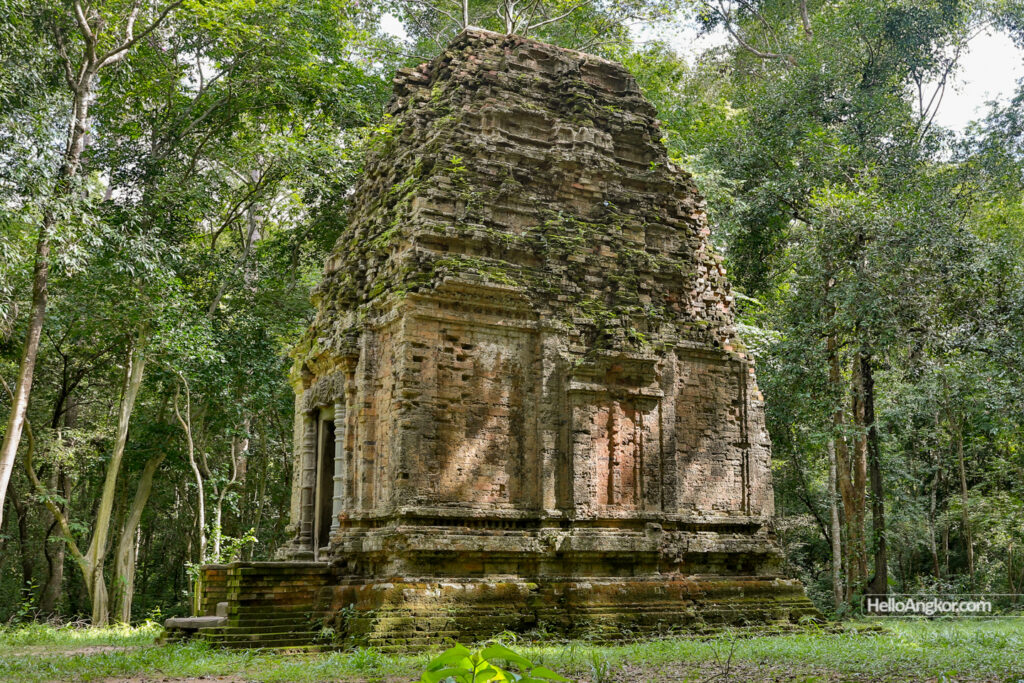
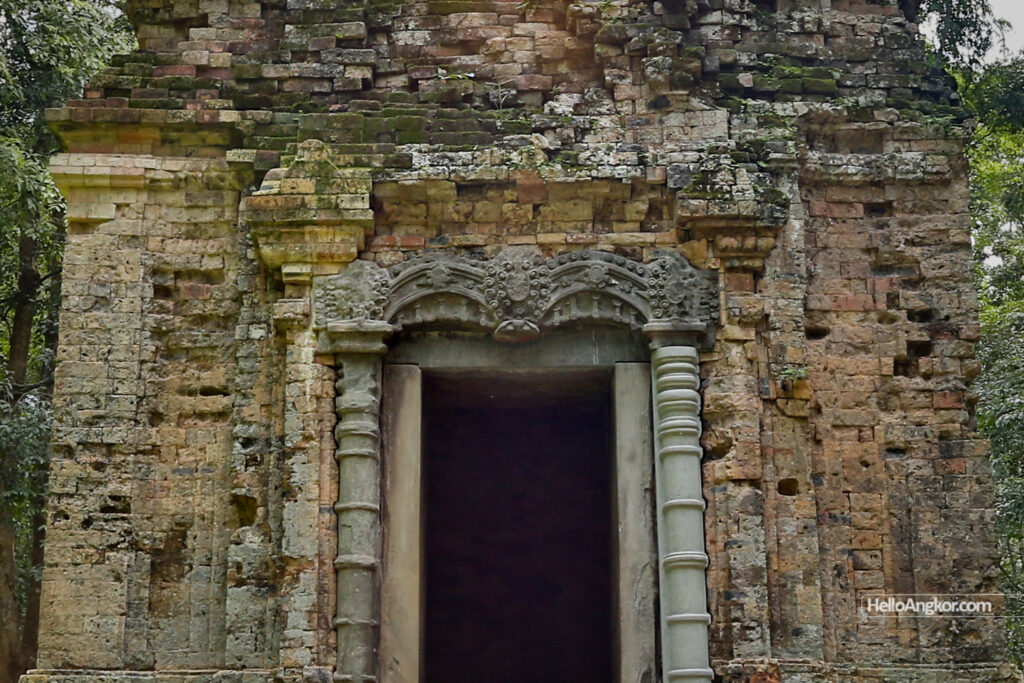

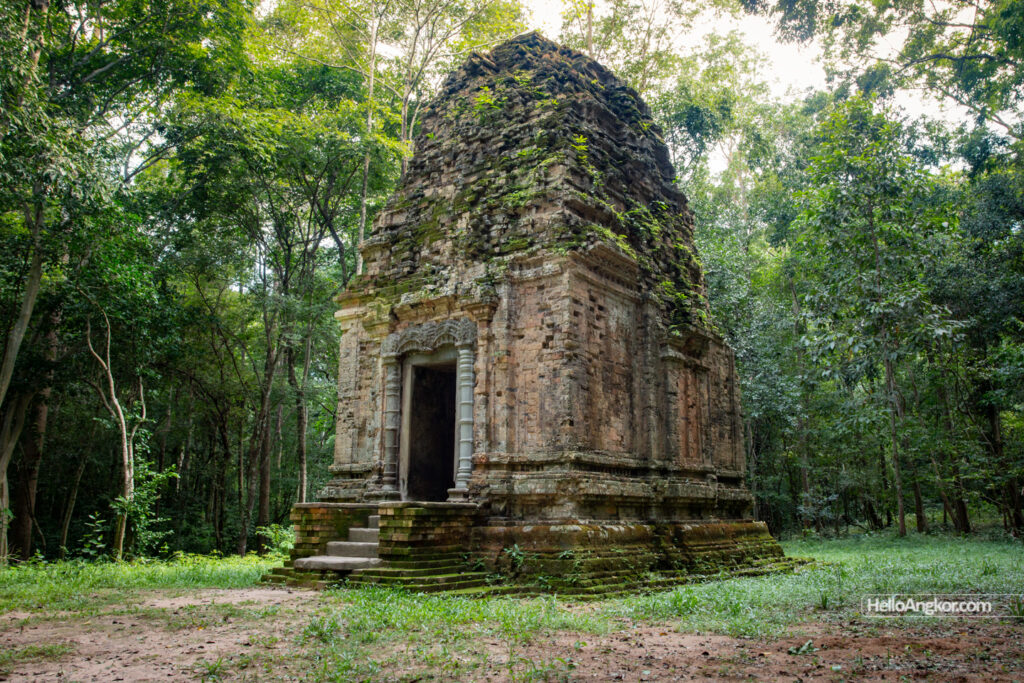
Images from the 2022 visit while under restoration
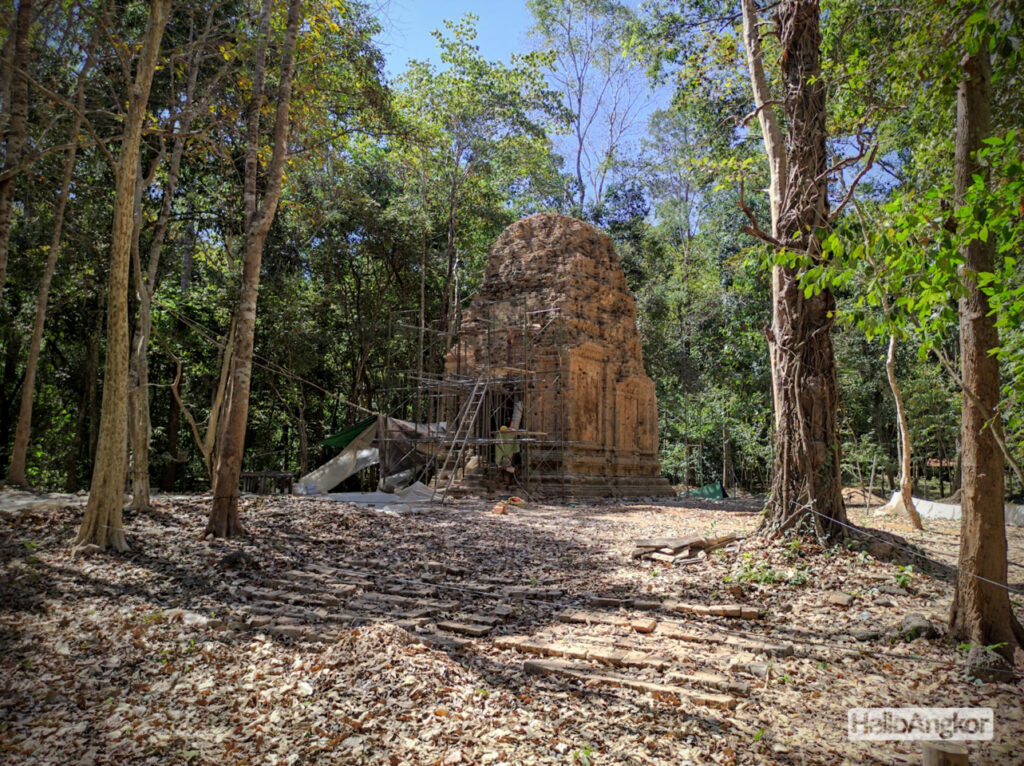
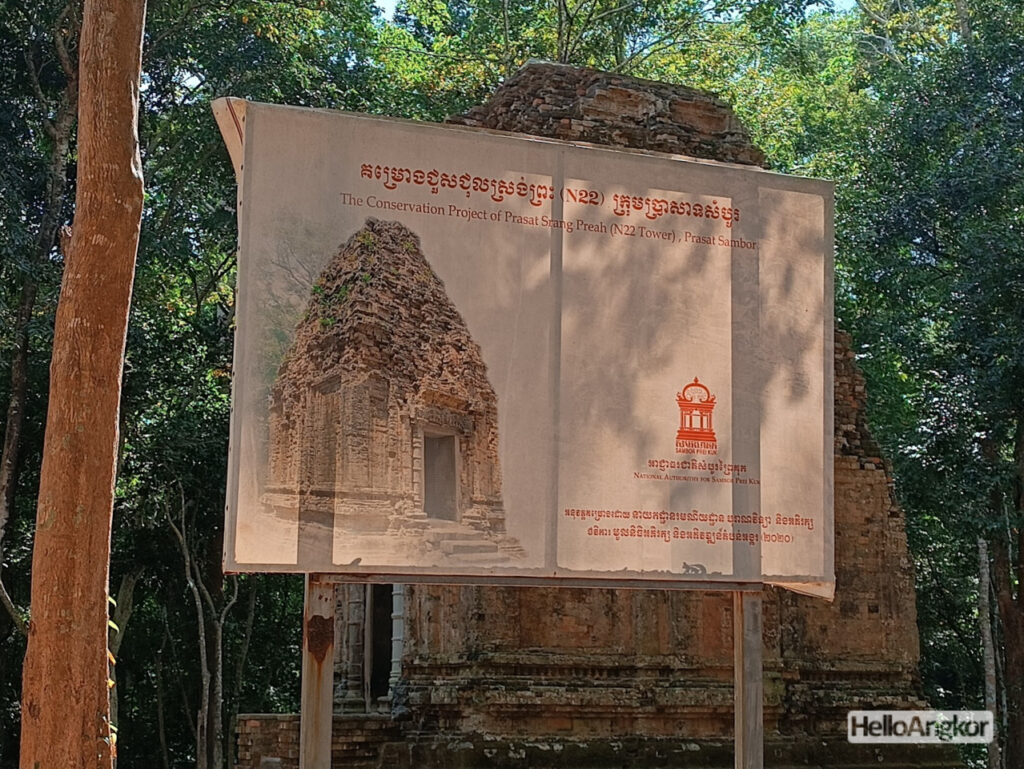
Historical Notes
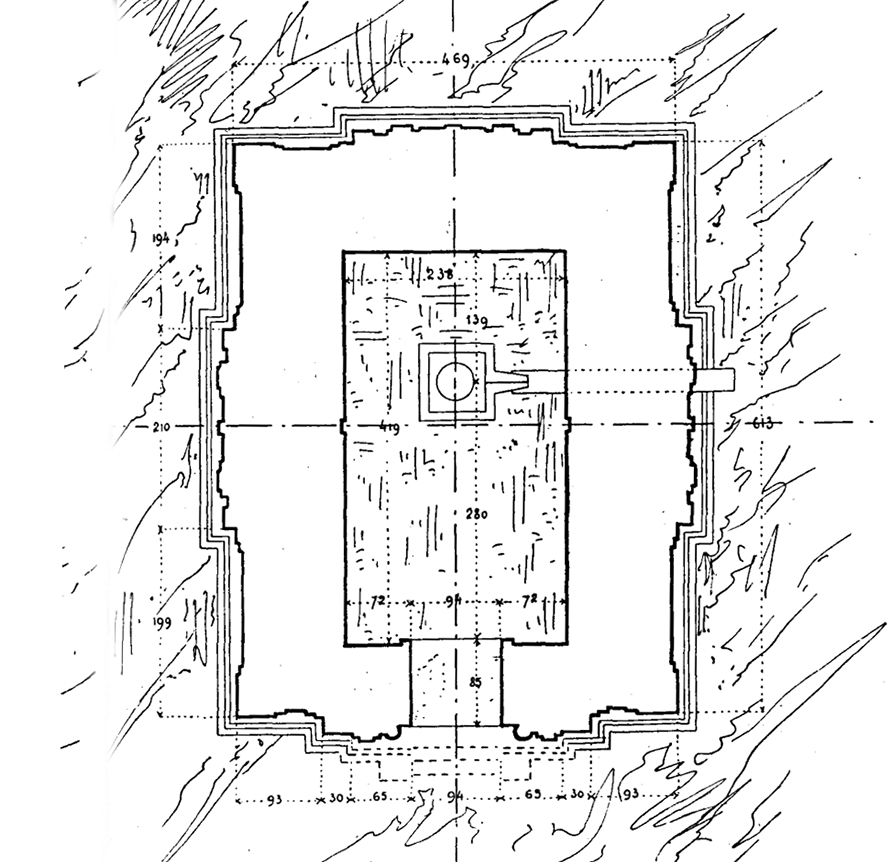

N22 is the only building preserved south of temple N, in this central part between the three main groups and which shows so few ancient remains. The sanctuary N22, is of the genus of N18. Likewise with a rectangular plan, with special false doors, and oriented to the East. Inside is a huge off-axis and very protruding somasutra. The door does not even have a reveal and the true lintel protrudes inside. The relief arch spans the space from one brick wall to the other above the bay, but low walls extending the stone abutments come to relieve it. The room is devoid of ordinary hooks. It retains part of its ablution tub and idol; it was a standing figure of Brahma (see fig. 102 8).
Outside, the composition is simple. The walls do not present reductions of building; the false doors are slightly projecting; they are two-storeyed; the lower body has a simple cornice which bears a small low arched pediment; the first floor offers a gable whose tympanum is adorned with a reduced building, while an anterior body ends in a small arch-niche.
The door shows a curious type II lintel with two twin arches. A two-plane cornice rests on the lintel at a higher level than that of the pilasters. A kudu decorates each of these three cornice elements.
Three stories rise above the lower body of the monument and retreat weakly; the central motif, with three bodies, is enclosed between appliques which have only two. Simple pilasters occupy the intervals. The termination, here again indistinct, can only correspond to a gabled building.
L’Art Khmer Primitif, Henri Parmentier, 1927
Map
Site Info
- Site Name: Sreng Treach (Pr.) Khmer Name: បា្រសាទស្រែងត្រាច
- Reference ID: HA13552 | Posted: January 19, 2021 | Last Update: August 9th, 2023
- Other Names: N22, M21, Praying Rain Temple, Prasat Sreng Treach
- Tags/Group: pr, ra, Sambor Prei Kuk, T4, Temples
- Location: Kampong Thom Province > Prasat Sambour District > Sambour Commune > Sambour Village
- MoCFA ID: 3506

